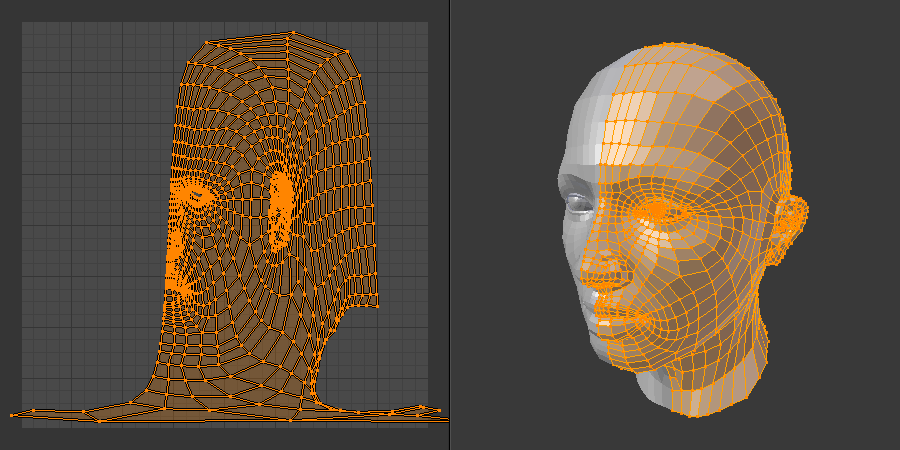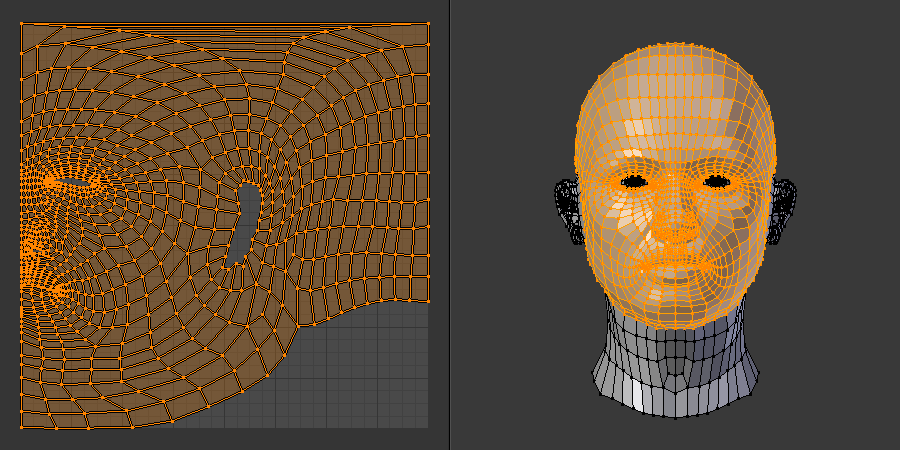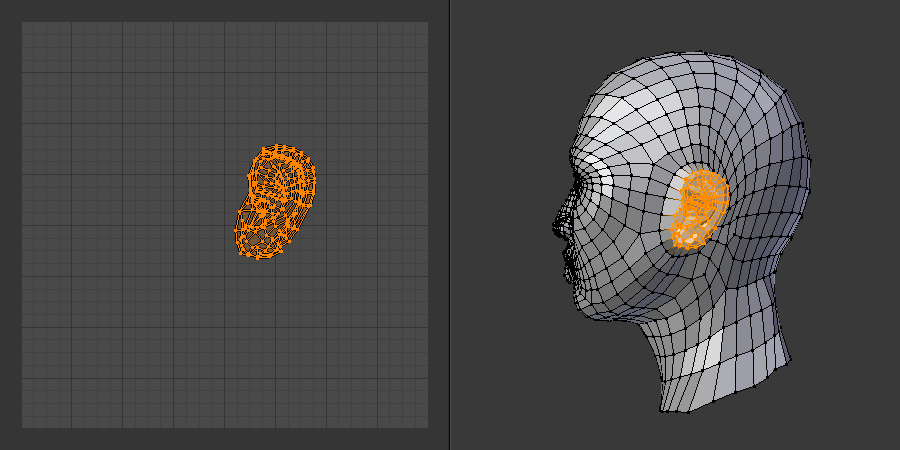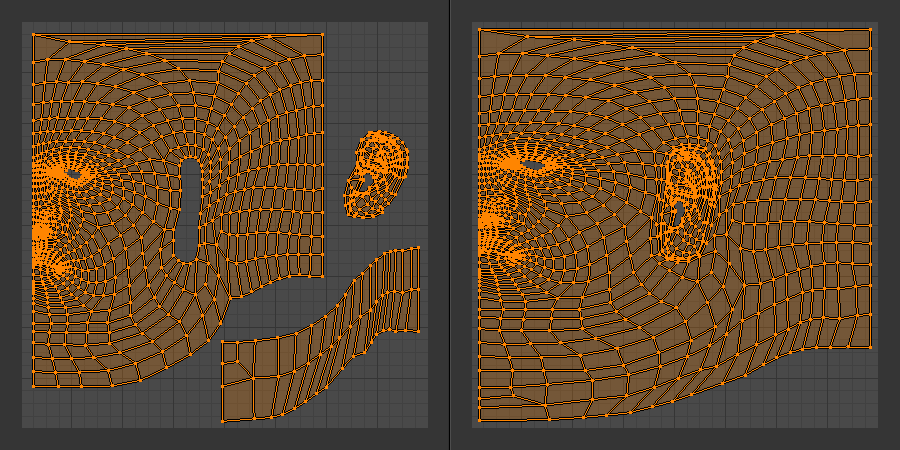レイアウトのワークフロー¶
This page contains various unwrapping tips.
Unwrapping in Multiple Steps¶
If you unwrap an entire mesh in one go, the resulting UV map may look rather messy. In the example below, the ear and facial features are squashed and the neck is stretched out way too far:

悪い展開、耳と首に注目。¶
While you could of course start fixing this UV map by hand, it's probably a better idea to drop it and unwrap the mesh differently. We'll divide it into pieces, unwrapping each one separately with the most suitable projection.
We start by selecting just the head -- excluding the eyes, ears, and neck -- and unwrapping it using Sphere Projection(球状投影):

Unwrapping just the head.¶
Next, select the ear, align the 3D Viewport view to look straight at it, and unwrap it using Project from View(ビューから投影).

Unwrapping the ear.¶
The UV Editor only shows the ear at this point, but don't worry: the UV coordinates for the head are still there, just hidden. To make them visible again, either select the head in the 3D Viewport again or enable Sync Selection(選択を同期) in the UV Editor.
Next, you can unwrap the neck using Cylinder Projection(円筒状投影).
ヒント
Instead of selecting and unwrapping each piece individually, you can also use Seams(シーム) to mark cutting lines around the ear and neck, then run a single Unwrap(展開) to map all three parts in one go.
Once everything is unwrapped, you can select the whole mesh in the 3D Viewport to see to the full UV map. Most likely, the different UV parts or "islands" will be overlapping; you can fix this in the following ways:
For each island, select a vertex and press Ctrl-L to select all the vertices it's connected (Linked) to. You can also hover over the vertex and press L, or simply set the Selection Mode(選択モード) to Island. Once the island is selected, scale it down and move it to a place where it no longer overlaps the others.
Alternatively, you can simply click Pack Islands(アイランドを梱包) in the menu to have Blender lay out the islands automatically.

一緒に配置され、スティッチされたUVマップ。¶
As a final step, you can align the islands to each other by moving and scaling, then connect them using Merge(マージ) -- or better yet, Stitch(スティッチ).
レイアウトの改良¶
After using the unwrapping tools, you may want to manually tweak the UV map, for example scaling up an area so it receives more pixels of the texture and can thus be more detailed. You can also use Minimize Stretch(最小ストレッチ) if the UV map is too warped compared to the 3D mesh.
複数のUVマップ¶
A mesh can have more than one UV map, where each map can assign different UV coordinates to the same 3D vertex. This is useful if, say, you need one UV map for textures and another for storing prebaked lighting.
You can add and remove UV maps in the UV Maps panel.
UVマップのコピー¶
You can copy a UV map from one mesh to another in several ways. If the meshes have the exact same topology and only differ in vertex positions, you can use Copy UV Maps(UVマップをコピー). If they have (approximately) the same surface but different topology, you can instead use Transfer Mesh Data(メッシュデータを転送).